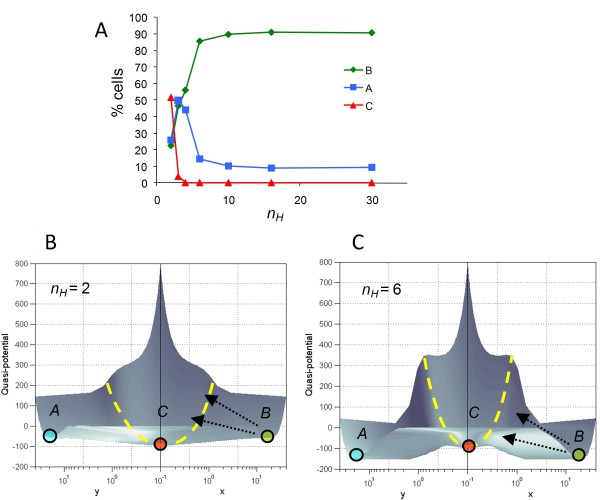Figure 5.
Height and steepness of barriers affects stochastic occupancy of stable states. (A) Percentage of stochastically simulated cells in the three attractors A, B and C in the tristable two-gene system at time t = 10,000 for a range of values of the Hill coefficient nH. All simulations were started from state B as the initial condition, and run to time t = 10,000 (dimensionless units). (B, C) With increasing nH, the height and steepness of the ridges relative to the valleys is increased, making stochastic transitions (arrows) from state B to state C, and thereafter to state A, less likely. (At longer time scales, where the distribution of the cell population among various attractors approaches an equilibrium, the percentage of cells in each attractor correlates simply to the relative depth of the attractor: see Figure S1, Additional File 1.) (B) nH = 2; (C) nH = 6.

